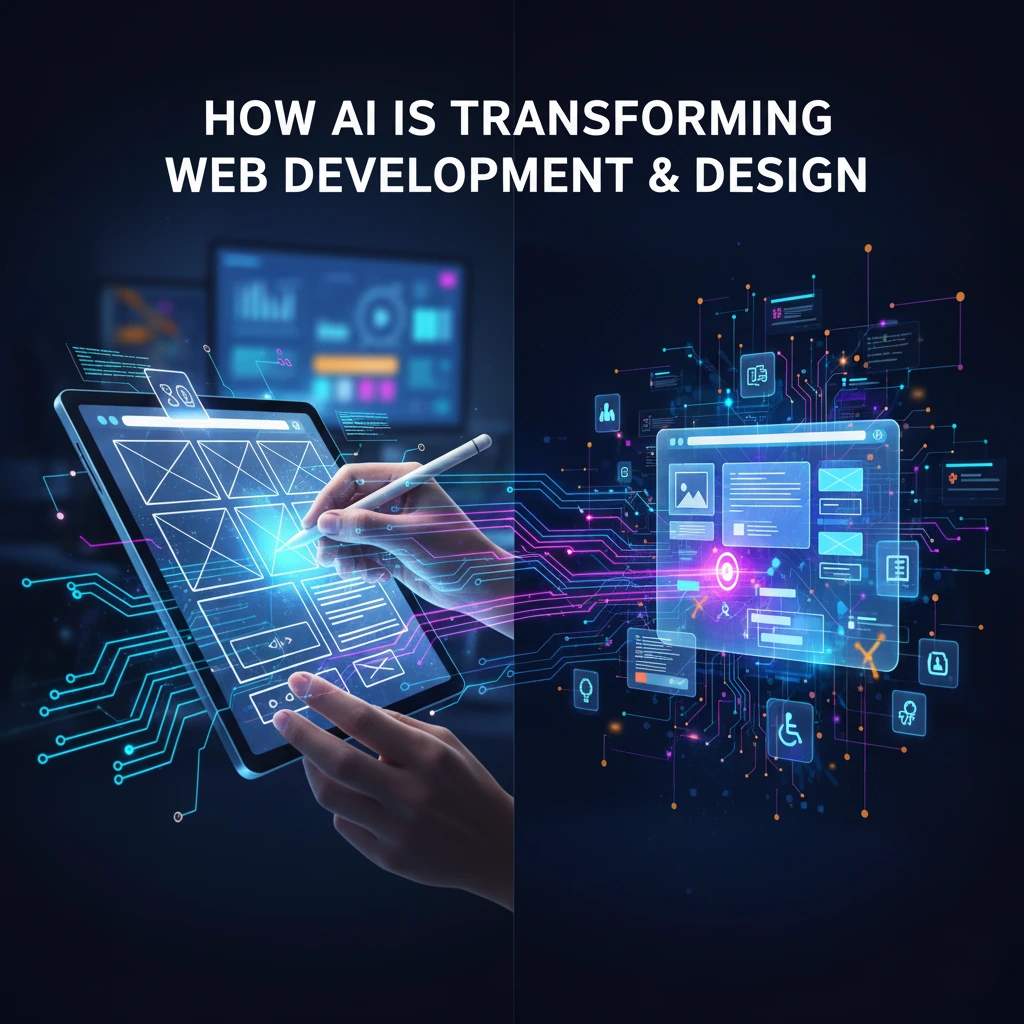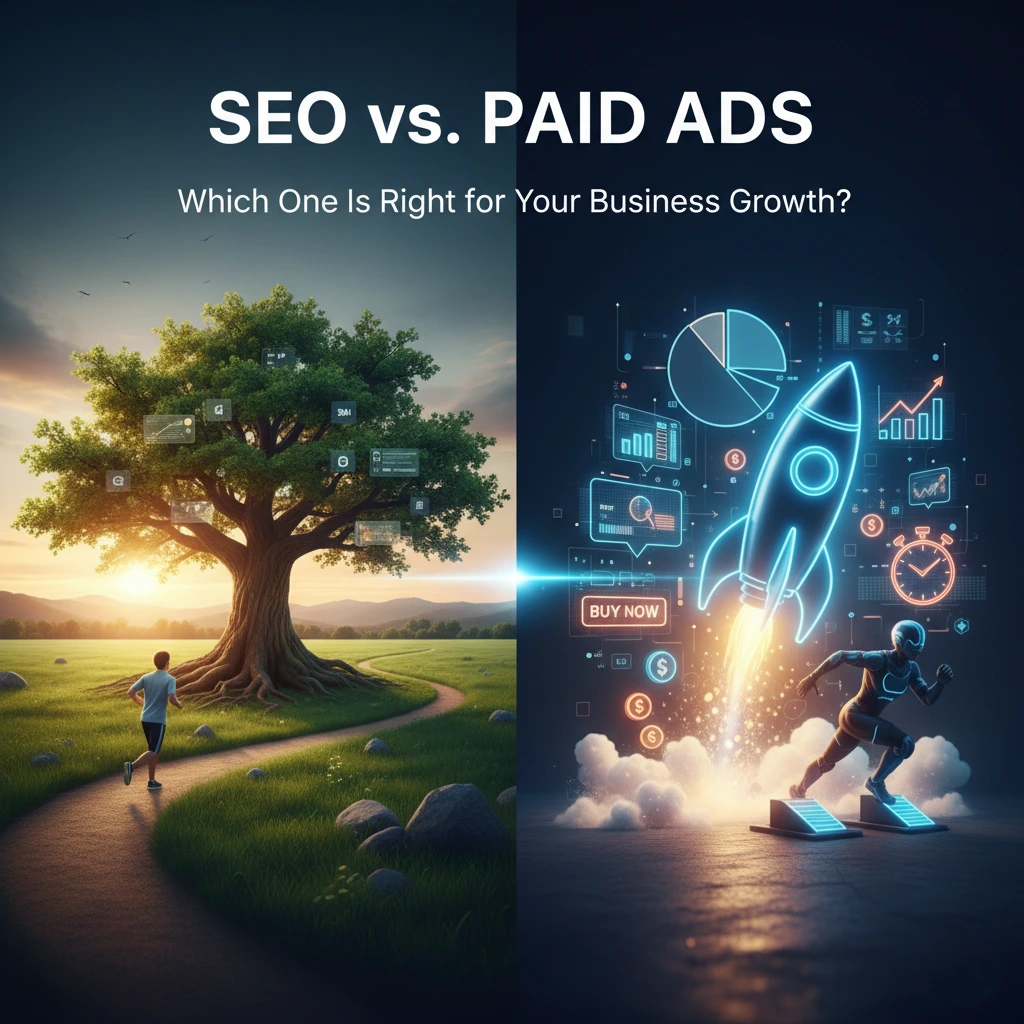 Web Development
Web Development
How AI is Transforming Web Development & Design
How AI is Transforming Web Development & Design
The online universe is constantly changing, but few technological developments have been as earth-shattering as the incorporation of Artificial Intelligence (AI). Once the domain of science fiction, AI is now a pragmatic and potent technology that is fundamentally transforming the way we make, build, and engage with the web. For web designers and developers, this isn't something in the future; it's a revolution currently underway, freeing us from routine tasks, opening up new avenues for creativity, and enabling a brighter, more intelligent, and more personalized internet, which is a key part of web development trends 2025.
If you're a part of the web development and design community, learning about AI's influence is not only a choice but a necessity to remain competitive in AI in web development. Let's explore the top ways that AI is changing the business.
1. Faster Development with AI-Enhanced Coding Assistants
And yet, maybe the most important effect of AI in web development is the emergence of AI-facilitated coding assistants. GitHub Copilot, directly integrated into code editors, sits as a "pair programmer," providing smart code completions, suggesting complete functions, and even generating boilerplate code from a plain natural language prompt.
How it's a game-changer:
Greater Efficiency: Code is written by developers faster and with fewer bugs, especially in AI for front-end development. Time-consuming and repetitive tasks are automated, allowing developers to concentrate on more complex problem-solving and architectural choices.
Reducing the Barrier to Entry: Not a substitute for essential programming skills, but such tools can allow junior developers to learn quicker and become productive sooner.
Simplified Debugging: AI is able to scan code and pinpoint likely bugs, recommend optimizations, and even provide solutions for standard mistakes, cutting down on debugging time considerably, which directly answers the question of how AI helps in debugging code.
2. Smart and Automated Website Builders
The "drag-and-drop" site builder isn't new, but AI is pushing it to new heights. AI-powered platforms, essentially advanced AI website builders, can now create and construct full websites with little or no human intervention. By responding to a few basic questions about the company, target market, and visual style desired, these platforms can create an entire, professional-quality website in minutes.
Examples in action:
Wix ADI (Artificial Design Intelligence): Collects information and then generates a tailored website with text, pictures, and layout based on the user's requirement.
Bookmark's AIDA (Artificial Intelligence Design Assistant): Takes decisions on design and layout in real-time, depending on the content.
3. The Rise of AI-Generated Web Design
In addition to constructing websites, AI-powered web design is also increasingly a creative collaborator in the design process itself. AI-driven design software can:
Design Elements: Produce logos, color schemes, and even entire layout ideas from basic text descriptions, changing the game for User Interface (UI) design.
Transform Sketches into Code: Software such as Uizard can take a hand-sketch wireframe and translate it into a digital design and even front-end, AI-generated code.
Data-Driven Design Decisions: AI can look at user behavior data across thousands of sites to recommend layouts, button positions, and design elements that have been proven to be effective and engaging.
4. Hyper-Personalized User Experiences
One of the most thrilling arenas for AI web development is the capacity to deliver truly personalized user experiences with AI. Rather than the one-size-fits-all website, AI can customize the content, structure, and recommendations for every unique visitor.
How it works:
Real-Time Content Adaptation: AI can process a user's browsing history, geolocation, and in-site behavior to dynamically modify the content they view, showcasing the power of AI in user experience (UX). This would be anything from presenting disparate blog post suggestions, product offers, or modifying the hero image on the home page.
Tailored E-commerce: For web shops, this is a huge benefit. Machine Learning (ML) can drive recommendation engines that are much more intelligent than mere "customers also bought" widgets, resulting in more sales and loyalty.
5. More Intelligent and Efficient Testing
Testing websites has always been a labor-intensive and often boring task. AI is changing Quality Assurance (QA) by automating and streamlining the testing process with automated website testing.
Visual Automated Testing: AI software can test a site on various browsers and devices to detect visual flaws and inconsistencies that would be virtually impossible for a human to pick up.
Smart Test Generation: AI can test an application to automatically create test cases, guaranteeing thorough test coverage.
Predictive Analytics: By analyzing user data, AI can predict which parts of a website are most likely to have bugs or cause user frustration, allowing developers to address issues proactively.
The Future is Collaborative
The AI boom in web development and design is not about making people ask "will AI replace web developers?"; it's about enhancing their capabilities. The future of web development is a co-creative one, where developers and designers collaborate with AI software to create improved, smarter, and more customized web experiences. With AI, we have the opportunity to transcend the routine, concentrate on creativity and strategy, and unlock a new age of innovation on the web.
Leave a Comment
Your email address will not be published. Required fields are marked *


.png)